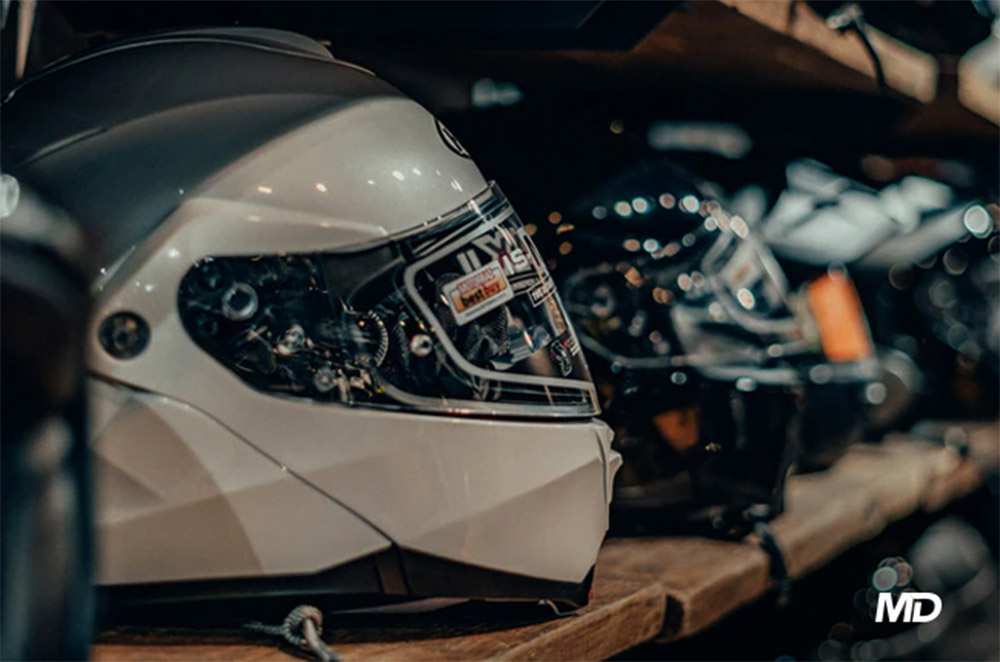ECE helmet safety standard gets a major update after 20 years
The major update of the ECE 20.6 safety standards is set to supersede the current ECE 20.5 standard on helmet safety.

The Economic Commission for Europe or ECE has been the helmet safety standard being followed in 47 countries in the European region. For the first time in 20 years, it’s getting a major update. This serves as a very timely and welcomed development as helmet and innovation design has progressed in the last 20 years, such as compatibility with communication accessories. The new standard of safety is going to be ECE 22.06, set to replace the current ECE 22.05.
However, one of the major changes we’ll be seeing from the new update would be the way they test their helmets. Currently, a standard ECE test is performed by placing a head form equipped with sensors inside the helmet to give data about the helmet to be tested. It is then dropped from a specific distance to an anvil. The problem with this method of testing is that it is not capable of recording the required results when being tested on scenarios involving different types of speeds of impacts. Some helmets would perform well in high-speed impacts, others would perform better in lower speed impacts. To add, helmets that perform well in high-speed impacts do not necessarily perform well in low-speed impacts and vice-versa. Thus, the new update in the new ECE helmet testing seeks to cover both criteria giving the helmets more consistency in safety standards and in both scenarios.
Another feature of the new update is to make tests that also take into consideration the angle of impact that occurs during crashes. A direct hit from flat surfaces does not take into account the injuries suffered by the twisting motion of the head during an impact. The new update’s tests will factor in rotation protection by including impacts against a 45-degree angle. Finally, the new ECE safety standard update also seeks to test the safety of modular helmets, something it was not given occasion to in the past. They seek to apply its safety standards in both open and closed positions. It also wants to ensure that retractable sun visors of modular helmets should be able to withstand the impact of a steel ball fired from a projectile at a speed of 60 meters per second. This effectively simulates a pebble hurling towards the rider during high speeds. Separate tests would be performed on Bluetooth communication accessories that manufacturers offer, one when it is installed, and one uninstalled. In any case, it must pass on both configurations.
It is said that these additional tests could require helmet manufacturers to develop new technologies in order to comply with the new standards the ECE may be imposing. However, the imposition of new technologies could also bring more costs for the new ECE standard helmets. In the end, there is no price in putting a premium for your safety.
Tagged Under
Related Articles
-
Expect only ECE 22.06 helmets from manufacturers starting July 2022 / News
As long as your 22.05-certified lid is in good condition, it’s legal to use in Europe but expect a new crop of 22.06 helmets to come out soon.
Latest News
-
Suzuki Philippines celebrates 50-year milestone with One Suzuki Kick-Off Ride / News
Suzuki celebrates its 50th anniversary with the One Suzuki Kick-Off Ride
-
Honda shakes up the retro scooter game with the Giorno+ / News
Honda has released the Giorno+ 125 scooter in the Philippines starting at P101,900.
-
Royal Enfield Philippines inaugurates new flagship store at Brixton, Pasig / News
Royal Enfield has opened the doors to its new flagship dealership in Brixton, Pasig.




